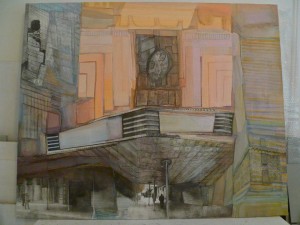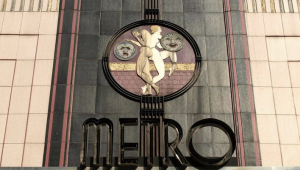#FridayReads, March 22–“Things Fall Apart,” Chinua Achebe
#FridayReads, March 22–Things Fall Apart by Chinua Achebe, who died Thursday at age 82. I read the book in college, the very copy shown here. It’s a classic, richly deserving of its status. 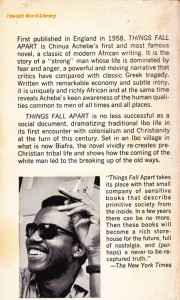
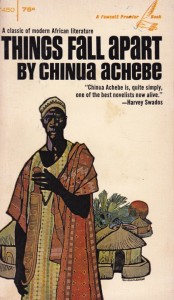
#FridayReads, March 22–Things Fall Apart by Chinua Achebe, who died Thursday at age 82. I read the book in college, the very copy shown here. It’s a classic, richly deserving of its status. 

Story in @nytimes shows ingenuity&sheer tenacity finally led to rescue of NYC subway tunnel worker-4 1/2 hours later nyti.ms/11jJlus
— Philip Turner (@philipsturner) March 20, 2013
 Firefighters and emergency workers went to extraordinary lengths to rescue the construction worker I tweeted about earlier, mired as he was in a veritable pool of quicksand 100 feet under Second Avenue and 95th Street in Manhattan. In addition to the NY Times article by reporters Matt Flegenheimer and Marc Santora, the latter also appears in a video at the Times site discussing the incident, and there’s a graphic (below) that shows the unusual configuration below ground that led to the peril for the worker. From the article:
Firefighters and emergency workers went to extraordinary lengths to rescue the construction worker I tweeted about earlier, mired as he was in a veritable pool of quicksand 100 feet under Second Avenue and 95th Street in Manhattan. In addition to the NY Times article by reporters Matt Flegenheimer and Marc Santora, the latter also appears in a video at the Times site discussing the incident, and there’s a graphic (below) that shows the unusual configuration below ground that led to the peril for the worker. From the article:
[Joseph Barone] became trapped midway between two entrance points used by construction workers, a distance of about 150 feet.
The situation was complicated by the fact that Mr. Barone was pinned at an awkward angle beneath plywood that had sunk into the mud with him. While some stretches of tunnel south of 96th Street have been poured over with concrete, according to the authority, the area where the worker lost his footing remains muck-filled.
Above him were two heavy bars used to brace the walls of the tunnel.
“The first units who got there were concerned about him slipping down more, so they got him roped up,” Chief Hayde said.
With the ropes slung over the struts, initial attempts to simply pull Mr. Barone out of the muck failed.
“There was a tremendous amount of suction pulling him down,” Chief Hayde said. . . .
Rescue workers considered using a cofferdam—essentially a plywood box, which would be constructed around Mr. Barone—but decided that in order to do so, they would have to detach him from the ropes, which they feared could result in his sinking entirely.
So firefighters also dug by hand, trying to scoop out two handfuls of muck for each one that seeped back in.
All the while, Lieutenant Goyenechea tried to keep Mr. Barone talking. He asked about his family, his favorite sports team and how he had come to be stuck.
Mr. Barone said he had simply lost his footing, and once his leg was trapped, there was little he could do.
The Rev. Stephen Harding, a chaplain with the Fire Department, said he was summoned to the scene to provide support to the emergency workers. But after spending over three hours above ground, he said, he asked to be escorted into the tunnel.
There were scores of emergency personnel, he said, covered in grime as they struggled to free Mr. Barone in the dim light. Mr. Harding approached, carefully, and extended his hand to grasp Mr. Barone’s. He could barely make out the worker’s face, which was caked in mud, he said. But a voice emerged.
“He said, ‘I’m hanging in,’ ” Mr. Harding recalled. “And I just held his hand.”
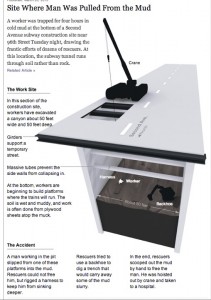
 On one of the snowiest nights of the winter, I took in one of the year’s best rock shows. It was a mostly acoustic set by Joel Plaskett, who began rocking out as a teenager twenty years ago in Halifax, Nova Scotia. Eight albums later, under such band names as Thrush Hermit and the Joel Plaskett Emergency, plus a near-score of notable albums he’s produced for other artists, Plaskett is a highly developed songwriter who flashes great rhyming instincts and an instantly likable and charismatic performing style. Following a great warm-up set by young band, The Great American Novel, a denim-clad, lanky Plasket stepped on stage in the Studio at Webster Hall by himself, playing a bright-sounding Gibson four-string tenor guitar. This weathered instrument, which to my ear shared tones and sonic qualities with hammered dulcimer and autoharp, jibed beautifully with Plaskett’s bright pop melodies and voice, resting as it does somewhere in the upper register. After a bit, he was joined on stage by Peter Elkas, who played a Gibson acoustic fitted out with de luxe pickups patched in to a Fender amp with plenty of fuzz and reverb, providing a sonic counterweight to Plaskett’s treble tones. Peter is a hot lead guitar player, so though this performance had no full band, it had more than full enjoyment of chops, and a real rock feel. The duo worked comfortably through a full sampling of Plaskett material, “Through & Through & Through,” “Let Me Down Easy,” “North Star” (my personal fave of the whole evening), “Love this Town,” and “Deny, Deny, Deny.” At one point during these offerings Plaskett invited to the stage female artist Ana Egge, whom I had heard sing back-up with Rose Cousins last year. Now a trio, the harmonies became more enveloping and the tunes even sweeter.
On one of the snowiest nights of the winter, I took in one of the year’s best rock shows. It was a mostly acoustic set by Joel Plaskett, who began rocking out as a teenager twenty years ago in Halifax, Nova Scotia. Eight albums later, under such band names as Thrush Hermit and the Joel Plaskett Emergency, plus a near-score of notable albums he’s produced for other artists, Plaskett is a highly developed songwriter who flashes great rhyming instincts and an instantly likable and charismatic performing style. Following a great warm-up set by young band, The Great American Novel, a denim-clad, lanky Plasket stepped on stage in the Studio at Webster Hall by himself, playing a bright-sounding Gibson four-string tenor guitar. This weathered instrument, which to my ear shared tones and sonic qualities with hammered dulcimer and autoharp, jibed beautifully with Plaskett’s bright pop melodies and voice, resting as it does somewhere in the upper register. After a bit, he was joined on stage by Peter Elkas, who played a Gibson acoustic fitted out with de luxe pickups patched in to a Fender amp with plenty of fuzz and reverb, providing a sonic counterweight to Plaskett’s treble tones. Peter is a hot lead guitar player, so though this performance had no full band, it had more than full enjoyment of chops, and a real rock feel. The duo worked comfortably through a full sampling of Plaskett material, “Through & Through & Through,” “Let Me Down Easy,” “North Star” (my personal fave of the whole evening), “Love this Town,” and “Deny, Deny, Deny.” At one point during these offerings Plaskett invited to the stage female artist Ana Egge, whom I had heard sing back-up with Rose Cousins last year. Now a trio, the harmonies became more enveloping and the tunes even sweeter.
Plaskett had an easy familiarity with the boisterous Monday night crowd, bantering back at folks after their many song requests. This was an audience that knew much of his repertoire. He was funny about it, and diplomatic, as he’d say something like, “Now that’s a very interesting request, and maybe I’ll play it later, but right now I had this one in mind.” He explained how he comes to play a 4-string tenor guitar this way (lightly paraphrased): “One time in a store I saw this tenor guitar, first one I ever saw, but I didn’t have the money to buy it (150 bucks). So I said to my dad, ‘Hey, Dad, there’s this really nice guitar downtown.’ So he bought it and I got to play it.” After what by my count was the 16th song of this generous set, the musicians all left the stage, though a round of lusty clapping soon brought Joel back to the mic for what became a quite funny interlude before his encore. He took an IPhone out of his Cowichan vest and proceeded to sample some of his music library for us through the house sound system, with him miming the romantic vocal stylings of R&B artist Bobby Womack. Then, he played a version of his own “Fashionable People,” which has been widely seen because of a video he made of him dancing with leggy models, only in this new version the lyrics had been rewritten with goofy kids’ lyrics, making it into a suitable nursery school song. Joel acted out all the parts–funny, clever stuff. With that, his bandmates Peter and Ana returned to their places and he launched into the true encore, a love song to Canadian geography of the land and heart, “On the Rail,” with evocations of the scenic Cabot Trail, trans-continental train rides, sailing ships, and the stars in the sky.
As the musicians packed up, opportunities for conversation and mingling arose. Joel was just as personable off-stage as on, meeting and greeting many fans, including or two drunk ones. Earlier in the day the two of us had exchanged a tweet about set times, so he recognized me and we shook hands as I thanked him for the great show. I bought his CD, “Three,” and then wandered over to where Peter Elkas was winding up some cables. He’s a really nice-looking guy, and he was just as nice to meet. I told him how much I’d enjoyed his guitar tone and he explained how lucky he had been to find a scarce pick-up–mounted in the center hole of his instrument in the pics below–that allowed him to get those sounds from what is after all still just a Gibson acoustic. It sounded more like Neil Young’s Old Black than a simple acoustic. I added that I enjoy the R&B sound he gets in his own recordings, and joked that I think of him as the “Boz Skaggs of Canadian R&B,” and we had a laugh about that. Seriously then, I recommended to Peter my favorite Boz Skaggs album, “Moments,” a classic record from 1971. Getting ready to go back into the sleeting night, I spotted the guys from opening act, Great American Novel, and introduced myself to them and handed out a few of my cards. They’re a fun bunch, and really replete with bookish associations, from their band name to their songs. I appreciated that and told them of my own book background. I learned that one of them, drummer Aidan, is the son of notable American fiction writer Jim Shephard, author of You Think That’s Bad. I’m going to keep an eye out for gigs of theirs and hope to hear them again. I said good night to friend Ontarian Nick Wynja, of Hack/Make whom I’d run in to here, a fellow member of the #R3NYNJ, a hashtag that signifies the CBC Radio 3 fan group of New York and New Jersey.
I had a great time at this show, a veritable “Joel Plaskett–Unplugged,” with him singing about 18 songs and playing almost 90 minutes. My first time seeing him–what a fun, passionate performer, full of banter and creative juice. He’s also a really great writer. Below are pictures I took last night.Please click here to see pictures I took last night.
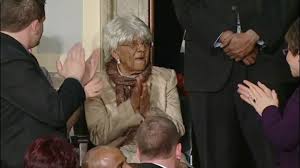 Desiline Victor is the woman who President Obama saluted during his State of the Union address last month. 102 years old, the Haitian-born Florida voter had waited in lines for more than six hours to vote last November. A couple weeks ago she heard news reports that in criticising the 1965 Voting Rights Act, which the Supreme Court may strike down, Justice Scalia had called the Act’s special provisions–which target states and locales with a history of discrimination–a “racial entitlement.” Outraged at this remark, she sent Scalia a letter that Ryan J. Reilly of Huffington Post shares with his readers today. According to Reilly,
Desiline Victor is the woman who President Obama saluted during his State of the Union address last month. 102 years old, the Haitian-born Florida voter had waited in lines for more than six hours to vote last November. A couple weeks ago she heard news reports that in criticising the 1965 Voting Rights Act, which the Supreme Court may strike down, Justice Scalia had called the Act’s special provisions–which target states and locales with a history of discrimination–a “racial entitlement.” Outraged at this remark, she sent Scalia a letter that Ryan J. Reilly of Huffington Post shares with his readers today. According to Reilly,
“Victor said she was ‘shocked’ when she heard what Scalia said about the Voting Rights Act during the Supreme Court’s oral arguments on a key provision of the law last month. ‘I thought you must not know what’s happening in this country,’ Victor wrote. ‘After learning more this year from the civil rights group, Advancement Project, I know that just as there were for me, there are barriers to voting for many people – especially people who are black or brown.’ Obama pointed to Victor, who waited in line for hours to vote at a polling place in Miami, as an example of why it was important to fix the nation’s broken election system.
‘I was born at a time when women were not allowed to vote in Haiti, nor the United States,” she continued. “After becoming a U.S. citizen, I was so proud to have a voice in this country. That is what inspired me to fight last year. But voting should never require such a fight. We need more make sure that all Americans can have their voices heard – we need the Voting Rights Act. Justice Scalia, the Voting Rights Act is not a racial entitlement. It is an important protection that helps all Americans exercise their right to vote. It was put in place because, sadly, there are people in this country who don’t want everyone to have an equal voice at the ballot box.'”
Victor’s full letter is pasted in below:
March 12, 2013
Dear Justice Scalia,
My name is Desiline Victor. I was born in Haiti in 1910, and I am 102 years old. After coming to the United States for a better life, today I am an American citizen and live with my family in North Miami. You might remember me from the State of the Union address last month, where President Obama told my story about how hard it was for me to vote.
When I heard what you said about the Voting Rights Act being a “racial entitlement,” I was shocked. I thought you must not know what’s happening in this country. After learning more this year from the civil rights group, Advancement Project, I know that just as there were for me, there are barriers to voting for many people – especially people who are black or brown. I also know that the Voting Rights Act is a way to protect the votes of communities that still face these problems. I would like to tell you about the struggles I faced in the last election.
During the early voting period in Florida last October, I went to my polling place early in the morning. The line was already very long, and wait times were as high as six hours. I stood for three hours before I started to get shaky on my feet, but no one could assist me unless I made it to the front of the line. In addition, there were no poll workers available who could help me in my native Kreyòl language, despite North Miami’s large Haitian community. I was told to come back later. I left. But I was determined to vote, so I tried again. On my second visit that night, I was happy when I finally cast my ballot. But I was also upset. In this great nation why should anybody have to stand in line for hours, and make two trips, to vote?
Not everybody persevered as I did. I learned later that hundreds of thousands of voters in Florida gave up and went home without voting, and that Black and Latino voters were more likely to face those shamefully long lines and wait times. One reason was a new law that cut the early voting period. Around the country, other new laws were passed that made voting harder in 2012 – but Section 5 of the Voting Rights Act blocked many of them before the election. Section 5 also helps voters in other ways. In the five counties in Florida that are covered, voting help in Spanish and Kreyòl is required because of their large Latino and Haitian populations.
I was born at a time when women were not allowed to vote in Haiti, nor the United States. After becoming a U.S. citizen, I was so proud to have a voice in this country. That is what inspired me to fight last year. But voting should never require such a fight. We need more make sure that all Americans can have their voices heard – we need the Voting Rights Act. Justice Scalia, the Voting Rights Act is not a racial entitlement. It is an important protection that helps all Americans exercise their right to vote. It was put in place because, sadly, there are people in this country who don’t want everyone to have an equal voice at the ballot box.
Equality and the right to vote are the shining lights of American democracy that drew me to these shores, and that right should not be taken away. In fact, it should be made stronger to help more voters who faced obstacles like I did.
Sincerely,
Desiline Victor
Thx to @openculture my wife&I saw a good film last nite-1949’s ‘Impact’ w/Brian Donlevy. 100s more free #FilmNoir at bit.ly/15dQmtq
— Philip Turner (@philipsturner) March 17, 2013
One of my favorite films is “Out of the Past,” the 1947 classic with Robert Mitchum, Jane Greer, Kirk Douglas, and Rhonda Fleming. I’ve watched it many times, and enjoy it so much that when I re-view it now the scenes seem to unfold like movements in a symphony. Because I love it do much, I’m always on the lookout for other noir-ish standouts. If you don’t know “Out of the Past,” please see the visuals below, the box on my old VHS copy of the movie, and the jacket of the pseudonymous Geoffrey Homes’ book, Build My Gallows High, which he adapted in to the screenplay, under his real name Daniel Mainwaring. Given my fondness for film noir, and crime and detective fiction, I was recently delighted to discover that OpenCulture.com, which describes itself as “The best free cultural and educational media on the web,” has assembled a site with access and links to 475 movies, many noir flicks, all free of charge to watch.
As indicated in the tweet above, Kyle and I saw a good one last night, chosen almost at random from among Open Culture’s offerings. Set in San Francisco, Brian Donlevy plays a husband who survives a murderous attack on him by his adulterous wife’s lover. Minutes later, the attacker is himself killed, and Donlevy, who had first been assumed dead, later surfaces alive, only to be accused of murder. It’s filled with surprises and twists, and excellent performances–from the avuncular Charles Coburn as a police detective with an Irish brogue and Ella Raines, a beauty we had never seen on screen before, as Donlevy’s love interest, counterpoint to his vindictive wife. The sound and picture quality were excellent. It’s clear we’re going to be working our way through Open Culture’s vast collection.
* If, like me, you’re big fan of Robert Mitchum, I must also recommend Lee Server’s galvanic biography, Robert Mitchum: “Baby, I Don’t Care” (the subtitle is a line from “Out of the Past”).
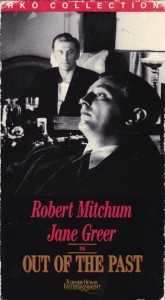


#FridayReads, March 15–The Big Book of Daring Swashbucklers an anthology assembled by writer Lawrence Ellsworth. Delightedly making my way through this terrific manuscript which I’m going to soon be presenting to publishers. It’s a spirited anthology of historical and adventure fiction that features generous selections from the work of such writers as Rafael Sabatini (best known for Scaramouche), Anthony Hope (of Prisoner of Zenda renown, Johnston McCulley (creator of Zorro), Conan Doyle (he favored his adventure yarns more than Sherlock Holmes), Pierce Egan (known for Robin Hood), Alexandre Dumas (there’s so much more than the Three Musketeers), and Baroness Orczy (creator of the Scarlet Pimpernel)–in all a total of 20 writers from what could be fairly be called the golden age of adventure fiction.
Evidence of continuing interest in the genre? Tom Reiss’s recent book Black Count: Glory, Reovlution, Betrayal and the Real Count of Monte Cristo, on Alexandre Dumas’ father, which was a finalist for the National Book Critics Circle annual award in biography. Here’s Reiss’s website, where you can learn more about his book. He read brilliantly at the NBCC awards a few weeks ago. His rediscovery of the elder Dumas affirmed for me my inclination toward this exciting new anthology. Delighted to be representing the supremely well-read Mr. Ellsworth.
As I reported on The Great Gray Bridge last month, I have a new consulting client, the American Booksellers Foundation for Free Expression (ABFFE), a non-profit organization that acts as the voice independent booksellers and the book community raise in opposition to censorship and book banning.
Today, the daily book biz outlet Shelf Awareness reported on the new arrangement, with the additional news of another hire for ABFFE–Kristen Gilligan Vlahos, who will be working as ABFFE’s auction manager–which I’m happy to link to here along with screenshots of the Shelf’s item.
The funds Kristen and I are helping ABFFE raise support the Foundation’s programs promoting free expression and freedom to read, like their signature initiative, Banned Books Week. ABFFE also advocates for bookstore customer privacy, which has become a flashpoint several times over the past couple decades. If you want to learn more about ABFFE and help support their initiatives, there’s more background at this blog post of mine, and at ABFFE’s own website. You can also ‘like’ their Facebook page and follow them on Twitter, @freadom, an apt handle.
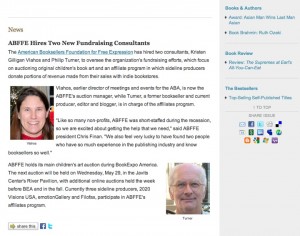
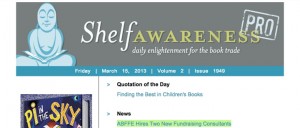
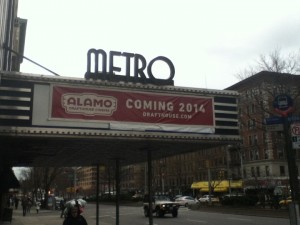 In the past year I’ve blogged twice about the announcement and expectation that Austin-based Alamo Drafthouse Cinema is really going to renovate the Metro theater in my Manhattan neighborhood and show movies there. However, despite press releases from Alamo that I’ve cited in my coverage, there’d been no sign of progress, leaving myself and others in the area unsure if it’s really going to happen. Finally, a banner on the old marquee I spotted the other day (pictured at the left) seems to make their plans clear at last: They’ll be opening in 2014. Here’s what I wrote about Alamo last summer:
In the past year I’ve blogged twice about the announcement and expectation that Austin-based Alamo Drafthouse Cinema is really going to renovate the Metro theater in my Manhattan neighborhood and show movies there. However, despite press releases from Alamo that I’ve cited in my coverage, there’d been no sign of progress, leaving myself and others in the area unsure if it’s really going to happen. Finally, a banner on the old marquee I spotted the other day (pictured at the left) seems to make their plans clear at last: They’ll be opening in 2014. Here’s what I wrote about Alamo last summer:
[They’ve] begun seeking the city permits required to begin gutting the interior and renovating the space to accommodate the five screens and viewing spaces they envision for the theater which first opened to the public in 1933. For readers unfamiliar with the site, the classic Art Deco marquee–[seen below] in a photograph and below in a painting by my wife Kyle Gallup–has landmark status and will be preserved as is, though the interior has no similar exemption. I’m very pleased with this news, and look forward to having them in the neighborhood, perhaps in 2013, or the next year.
